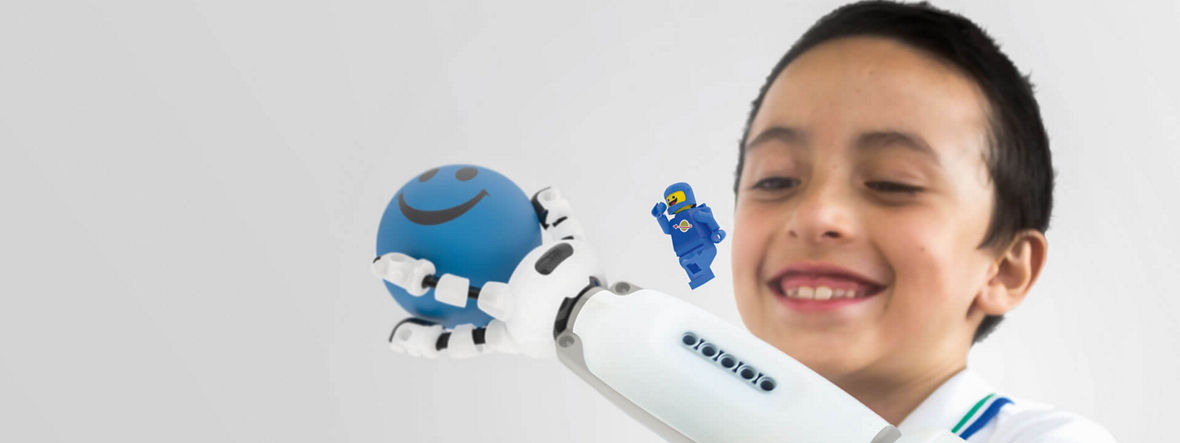In the Star Wars film “The Empire Strikes Back,” the hero, Luke Skywalker, loses his right hand in a duel with Darth Vader. Skywalker survives the duel, and at the end of the film we see him fine-tuning his prosthetic hand. From then on, he swings his lightsaber expertly and without any impairments whatsoever against the forces of evil.
In real life, the loss of an extremity still means a severe decline of an individual’s quality of life. The prostheses that are currently available can only inadequately replace the lost limb’s function, and in many cases they are a social handicap for the wearer. New design approaches and technologies are gradually coming up with promising ways to improve this situation.
»Children with prostheses should not be excluded by their peers; instead, they should become the main focus of interest when children are playing together«
Carlos Arturo Torres Productdesigner
These modern prostheses often seem playful. For example, the product designer Carlos Arturo Torres has designed a prosthetic arm for children in cooperation with the Lego Future Lab, the toy manufacturer’s experimental research and development department. Torres would like to ensure that children with prostheses are not excluded by their peers but instead become the focal point when children are playing together. That’s why the prosthesis he developed, called Iko, ends not in a hand but in a Lego connector. The connector can be used to build any Lego construction, whether it’s an excavator shovel, a hand, or a Star Wars spaceship. The prostheses created by the designer Sophie de Oliveira Barata have been inspired by computer games and fetish fashion, and they remind one of humanoid robots.

CONDUCTING POLYMERS FOR NEURAL ELECTROCODES
However, in order to fulfill further promises of science fiction, a number of technical problems still have to be solved. One of the goals is to control the artificial extremities just as precisely as a real hand via motor impulses from the nerve paths. However, this kind of control becomes possible only if the microelectronics are connected with human nerves—using electrodes that are no larger than neurons. Conducting polymers seem to be promising materials for such neural electrodes, because they can transfer the charge of ions via the tissue to electrons in an electrode. In addition, they can be modified in order to improve their biocompatibility by means of special compounds called adhesion ligands or bioactive molecules.
Another challenge is that of tactile feedback: Only by touching an object can we know how firmly we can grip it without causing any damage. In order to equip prostheses with this kind of sensitivity, extremely tiny pressure sensors are needed. Piezoelectric polymers, which transform pressure and dynamic forces into electric signals, could be used for this purpose.
The more progress is made in the area of prosthetics, the greater becomes the need for new materials. The Corporate Foresight team at Creavis, Evonik’s strategic innovation unit, is therefore examining prosthetics and its growth opportunities for Evonik within the framework of its GameChanger focus topic. And who knows? Prosthetic hands such as Luke Skywalker’s may soon no longer be mere science fiction.



